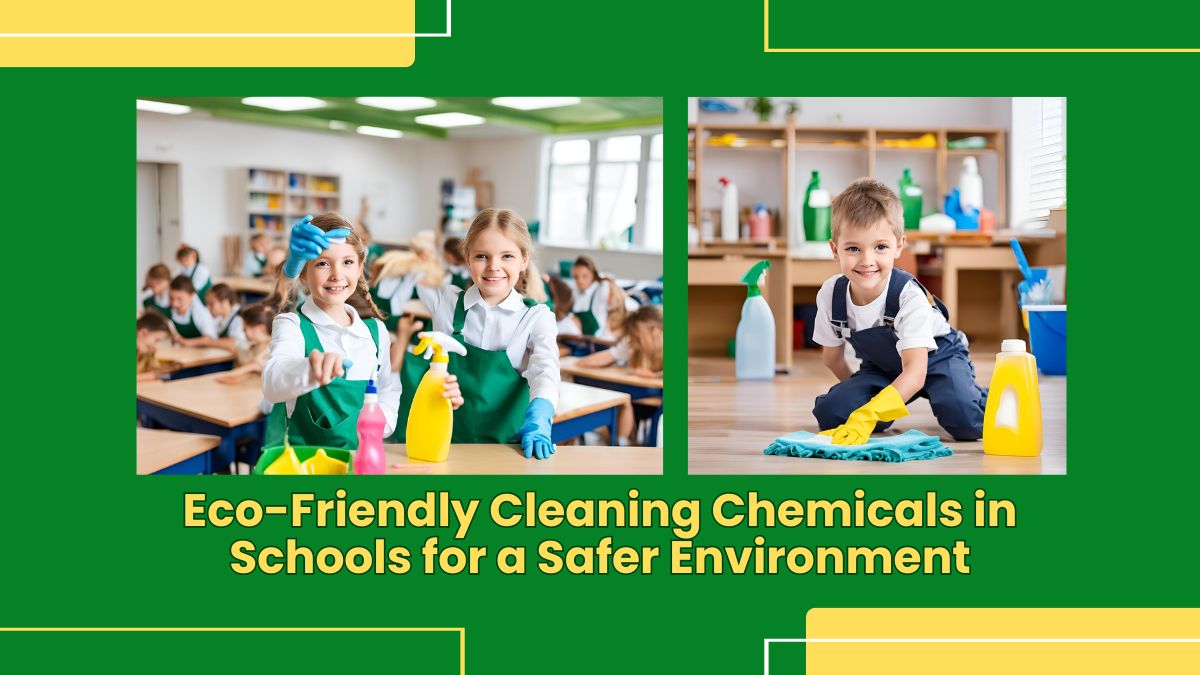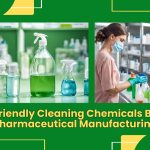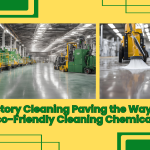Introduction to Eco-Friendly Cleaning Chemicals in Schools
Creating a safe and healthy environment for students is a top priority for any school. One significant way to enhance this environment is by implementing Eco-Friendly Cleaning Chemicals in Schools. Not only do these products protect the health of students and staff, but they also contribute to a greener planet. Let’s dive into why and how schools can adopt these sustainable solutions for a better future.
Understanding Eco-Friendly Cleaning Chemicals in Schools
Eco-friendly cleaning chemicals are products formulated to minimize their impact on the environment. They are made from natural, biodegradable ingredients that are free from toxic chemicals such as phosphates, chlorine, and synthetic fragrances. These products aim to provide effective cleaning while reducing pollution and health risks.
Importance of Eco-Friendly Cleaning Chemicals in Schools
Schools are environments where children spend a significant amount of time. Traditional cleaning products can release harmful chemicals into the air and surfaces, leading to potential health issues like asthma, allergies, and other respiratory problems. By using eco-friendly cleaning chemicals, schools can ensure a safer environment for learning and growth.
Benefits of Eco-Friendly Cleaning Chemicals in Schools
Health
One of the most significant benefits of using eco-friendly cleaning products in schools is the improvement in indoor air quality. These products do not emit volatile organic compounds (VOCs) that can irritate the eyes, nose, and throat. Consequently, there are fewer sick days and health-related absences, promoting a healthier student and staff population.
Environmental
Eco-friendly cleaning products are designed to be biodegradable and less toxic to aquatic life. They reduce the chemical load released into waterways, helping to protect wildlife and ecosystems. By choosing these products, schools can significantly reduce their environmental footprint.
Educational
Implementing eco-friendly practices in schools can also serve as a valuable educational tool. It provides a practical example of sustainability in action, teaching students the importance of caring for the environment. This hands-on learning experience can inspire students to adopt eco-friendly habits in their own lives.
Make Air Green with Green Air!
Making odors is not a solution when it comes to Air Fresheners. EcoChem with a thought to unmask the foul smells with Eco-Green Air which is one of the best bio-based products for multi-purpose air fresheners. The chemical-based air fresheners that are available in the market create a coating on the nasal membrane and insist the brain think that the foul smell is gone.
Give the Floor A Glow With Eco-Green Flo!
Eco-Green Flo is a cleaning solution made with extrinsic research from researchers at Ecochem. With our inclination towards bio-based cleaning products, this natural concentrate has a strong ability to sanitize any type of floor gently and adds a mirror shine to the surfaces. With single usage, the solution cleanses ceramic walls, floor tiles, lacquered surfaces, marble floors, marble surfaces, and ceramic walls in minutes.
Challenges in Implementing Eco-Friendly Cleaning Chemicals in Schools
Cost Considerations
One of the primary challenges schools face when switching to eco-friendly cleaning products is the perceived cost. While these products can sometimes be more expensive upfront, they often lead to long-term savings through improved health and reduced absenteeism.
Availability and Accessibility
Not all eco-friendly cleaning products are readily available in every region. Schools may need to invest time in researching and sourcing these products, which can be a barrier to implementation.
Training and Knowledge Requirements
To effectively use Eco-Friendly Cleaning Chemicals in Schools, staff must be trained on proper application techniques and safety protocols. This requirement can be a hurdle if there are limited resources for training programs.
Steps to Implement Eco-Friendly Cleaning Chemicals in Schools
Assess Current Cleaning Practices
The first step in making the switch is to evaluate the current cleaning methods and products used. This assessment helps identify areas where eco-friendly alternatives can be integrated.
Research and Select Eco-Friendly Products
Schools should research and choose products that are certified by reputable environmental organizations. Reading labels and understanding the ingredients are crucial steps in selecting the right products.
Training Staff and Students
Educating the cleaning staff and students on the benefits and proper use of eco-friendly products is essential. Workshops and training sessions can ensure everyone is on the same page and committed to the transition.
Monitor and Evaluate Performance
After implementation, it’s important to monitor the effectiveness of the new cleaning products and practices. Regular evaluations can help address any issues and ensure that the switch is beneficial in the long run.
Several schools across the globe have successfully transitioned to eco-friendly cleaning solutions. For instance, a primary school in California reported a 30% reduction in student absences due to respiratory issues after switching to green cleaning products.
These schools have also shared valuable lessons, such as the importance of involving the entire school community in the transition process and the need for ongoing education about the benefits of eco-friendly practices.
Impact on the Future in Eco-Friendly Cleaning Chemicals in Schools
Innovations in Eco-Friendly Cleaning Products
The market for eco-friendly cleaning products is continually evolving, with innovations making these solutions more effective and affordable. Emerging technologies and improved formulations are set to make green cleaning even more accessible.
Policy and Regulation Changes
Government policies and regulations are increasingly supporting the use of eco-friendly cleaning products. Schools can stay ahead by keeping informed about these changes and taking advantage of any available incentives or support programs.
Conclusion on Eco-Friendly Cleaning Chemicals in Schools
Implementing eco-friendly cleaning chemicals in schools is a proactive step towards creating a safer, healthier, and more sustainable environment for students and staff. While there are challenges to overcome, the long-term benefits far outweigh the initial hurdles. By making this switch, schools can lead by example, teaching the next generation the importance of environmental stewardship.
FAQs on Eco-Friendly Cleaning Chemicals in Schools
What are eco-friendly cleaning chemicals?
Eco-friendly cleaning chemicals are products made from natural, biodegradable ingredients designed to minimize environmental impact and reduce health risks associated with traditional cleaning products.
How do eco-friendly cleaning chemicals benefit students’ health?
These chemicals improve indoor air quality by reducing the presence of harmful VOCs, leading to fewer health issues such as asthma and allergies, and consequently reducing student absences.
What steps can schools take to switch to eco-friendly cleaning chemicals?
Schools should start by assessing current cleaning practices, researching and selecting certified eco-friendly products, training staff and students, and monitoring the effectiveness of the new products.
Are eco-friendly cleaning chemicals more expensive than traditional ones?
While they can be more expensive initially, eco-friendly cleaning chemicals often lead to long-term savings through improved health outcomes and reduced absenteeism.
What are some common eco-friendly cleaning products available for schools?
Common eco-friendly cleaning products include those certified by organizations such as Green Seal and EcoLogo and often contain natural ingredients like vinegar, baking soda, and essential oils.
Written by: Anshika


